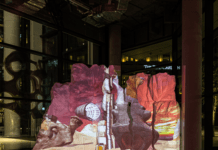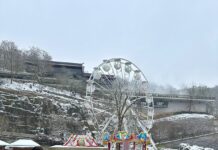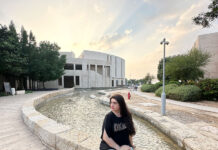Few nations have histories as ancient, complex and laced with tragedy as Armenia. And even fewer have a culture that is as rich and resilient. This is a destination where you will be intrigued by history, awed by monuments, amazed by the landscape and charmed by down-to-earth locals. It is not an easy place to explore — roads are rough, transport is often hard to navigate and those who do not speak Armenian or Russian may find communication difficult — but traveling here is as rewarding as it is revelatory.

Yerevan:This is a city full of contradictions – top-of-the-range Mercedes sedans share the roads with Ladas so old they should be in museum collections; old-fashioned teahouses sit next to chic European-style wine bars; and street fashions range from hipster to babushka with many weird and wonderful variations in between. Few traces of the city’s ancient past remain, with most of the building stock dating from the Soviet era. Fortunately, the stolid architecture is softened by a wealth of gardens and parks, as well as a number of handsome public squares.

Republic Square: Formerly known as Lenin Square during Armenia’s past as a Soviet Socialist Republic, the now renamed Republic Square lies in the center of Yerevan. Constructed during the Soviet era it once had a large statue of Lenin at its centre which has now been removed. Covering an area of some 14,000 square meters the square has seven major buildings on its perimeter and is now famous for its ‘Dancing and Singing Fountains’, a wonderful computer-generated auditory and visualdisplay with thewater fountains both changing directions and colors in rhythm to the different genres of music being played.

Tatev Monastery: This monastery and its associated buildings, located in Syunik Province is set one kilometer up on the edge of a deep and rocky river gorge – with the monastery having an eagles-eye view over the entire surrounding area. With tall cylindrical towers, narrow closely spaced windows and solid thick rock walls on two sides and high walls on the other two, the monastery housed over 1,000 monks in its heyday. Today, it is still active and the Church of Pogos and Peter (Peter and Paul) is well worth a walk-round.

Debed Canyon: This canyon manages to pack in more history and culture than anywhere else in the country. Nearly every village along the Debed River has a church, a chapel, an old fort and a sprinkling of khachkars or traditional carved cross-stone memorials somewhere nearby. Two World Heritage-listed monasteries, Haghpat and Sanahin, are the main attractions.

Hovhannavank: Perched on the edge of the Kasagh Gorge, this monastery in the village of Ohanavan was once an important educational and theological center where manuscripts were written and illustrated. It has two adjoining churches: a basilica dating from the 5th century and the 13th-century Church of St John. The church has an altar decorated with frescoes, as well as unusual cantilevered staircases on its north and south sides. The entrance to both buildings is via a splendid 13th-century gavit.

Haghpat Monastery: This pearl of a monastery, perched on the lip of the Debed Canyon, has UNESCO World Heritage status, along with Sanahin. This place has atmosphere and architectural splendor in abundance and the views around the canyon alone are worth the trip. Founded by Queen Khosrvanuch, who built Surp Nishan at the center of the walled complex, it took off in the 12th century with a magnificent bell tower, library and refectory.

Matenadaran: Located in the Armenian capital Yerevan, the Mesrop Mashtots Institute of Ancient Manuscripts, or Matenadaran, is certainly one museum you do not want to miss out on. The Armenian alphabet, created around 405ADby Armenian scholar Mesrop Mashtots, is one of the oldest in the world, and as such many ancient and important texts were translated into Armenian. Today this museum houses one of the world’s truly great collections of ancient writings and texts. Be amazed by the intricate beauty of the Ejmiadzin Gospel which dates back to 989AD and is framed in ivory or just how tiny a 15th century calendar is, weighing in as it does, at only 15 grams. When you are done inside looking at the works of art, do not forget a trip outside where the statue of Armenia’s alphabet’s creator sits outside with a student at his feet.

The Cascade: Just a short trip away from the Matenadaran museum in central Yerevan, is this wonderful tourist attraction, which combines modern aesthetics and architecture with the area’s outstanding natural beauty. The Cascade is a mix between a modern-day public square and a giant staircase, which you can reach the summit of, either by walking on the outside, or by taking a lift from the inside. The whole area is designed as an indoor and outdoor art exhibition. Add to that the backdrop of Mount Ararat (of Biblical fame) behind this landmark and views of the Armenian capital Yerevan below from its summit, and you begin to get the picture.

Erebuni Historical and Archaeological Museum: This archaeological site dates from 782BC, three decades before Rome was established. It gives an excellent insight into daily life in the palace of Argishti I, one of the greatest kings of Urartu. At the foot of the hill, a Soviet-era museum displays artifacts from the palace excavations including some extraordinary silver rhythons (drinking horns), as well as objects found when an Urartian tomb was uncovered in Yerevan in 1984 during the construction of a factory.

Vernissage: Armenian carpets, cognac, fruits, handicrafts and Soviet memorabilia are some of the most popular things people take home from Armenia. Most of these are plentiful at Vernissage, a seemingly never-ending weekend flea market next to Republic Square with the more touristy stuff in the back half, further from Republic Square. Another gift is a duduk, or traditional flute that is part of the UNESCO immaterial heritage.























